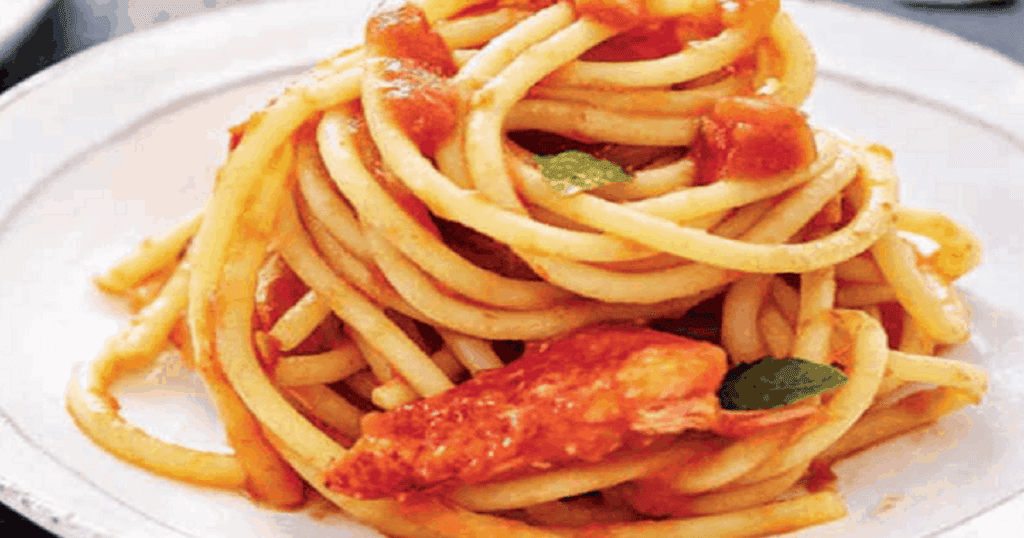Cooking lobster tail is an excellent choice if you want to impress your guests with a decadent seafood dish. This highly-prized delicacy can be intimidating to prepare but fear not; with five easy cooking methods, and expert tips, you’ll be cooking lobster tail like a pro in no time.
Whether you prefer boiling, steaming, baking, broiling, or grilling, this comprehensive guide provides all the information you need to ensure your lobster tail is succulent, flavorful, and beautifully presented. So why not take your culinary skills to the next level and learn how to cook lobster tail in 5 different ways?
Introduction to Lobster Tail
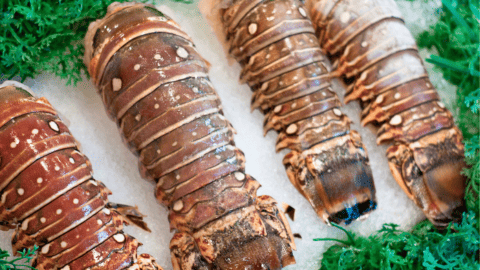
The lobster tail is a highly-prized part of the lobster due to its abundant meat. It’s also one of the most popular Lobster tail preparation techniques, as it is easy, fast, and tasty. The tail is the most flavorful part of the lobster and is often the largest, making it a great choice for larger servings. However, it’s important to remember that lobster flesh cooks quickly and can turn tough if overdone.
How to Select the Best Quality Lobster Tails
- Look for bright, vibrant colors. Lobster tails should be a deep, rich red color. Avoid any tails that appear gray, brown, or yellow.
- Inspect the shell. The shell should be firm and intact, not cracked or broken.
- Check for freshness. Fresh lobster tails should smell like the ocean and have a sweet aroma.
- Feel the texture. The meat should be slightly springy and firm, not soft or mushy.
- Ask about the origin. Buy lobster tails from a reputable source, such as a seafood market or fishmonger. (Buy Live Main Lobster)
How to Cook Lobster Tail Cooking Methods
There are five main ways to cook lobster tail: boiling, steaming, baking, broiling, and grilling.
Boiling
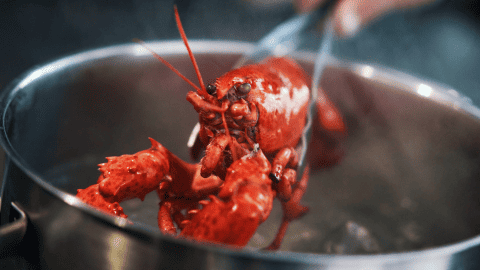
Boiling is one of the quickest and easiest ways to cook lobster tail. It’s also the most traditional method, as it has been used for centuries. Boiling quickly cooks the meat but can dilute the flavor. To boil lobster tail, it is best to start with cold water and a teaspoon of salt in a large pot.
Bring the water to a rolling boil and add the lobster tails, making sure they are fully submerged. Boil the tails for about 8-10 minutes, or until the shells turn bright red and the meat is cooked. Once cooked, remove the lobster tails from the boiling water and let cool before serving.
Steaming
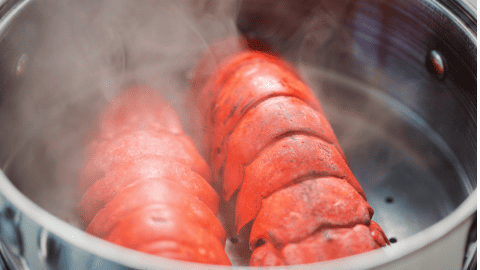
Steaming is a great way to cook lobster tail as it yields a clean flavor customizable with herbs and spices. It also helps retain more of the flavor of the lobster than boiling it. Steaming lobster tail does not require much preparation and is quite simple. First, fill a large pot with around two inches of water and bring to a boil. Once the water is boiling, place the lobster tails in the pot.
Also, steaming is an ideal cooking method for lobster tails as it keeps the lobster tender and moist while not overpowering the delicate flavor. Cover the pot with a lid and allow the lobster tails to steam for 8 to 10 minutes or until they are cooked. Once the lobster tails are cooked, remove them from the pot and season them with your desired Lobster tail seasoning and flavors.
Baking
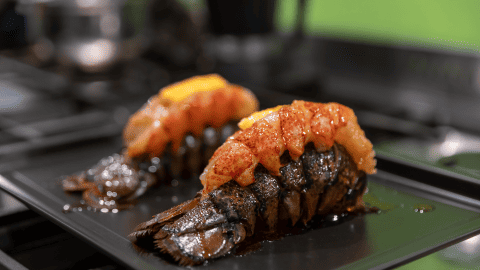
Baking is a great way to cook lobster tails because it allows the delicate texture of the lobster to shine through. You can season the lobster tails with herbs like parsley, oregano, thyme, and basil to get the most out of the lobster tails. You can also add some garlic or onion powder for more flavor. Add a white wine or butter splash to the baking dish for a more flavorful lobster tail.
The butter or white wine will add a rich flavor to the lobster tails and help bring out the flavor of the herbs. Keep an eye on the lobster tails while baking, as they can overcook quickly. Once the lobster tails are done, you can serve them with your favorite side dish, like a salad or a side of steamed vegetables.
Broiling
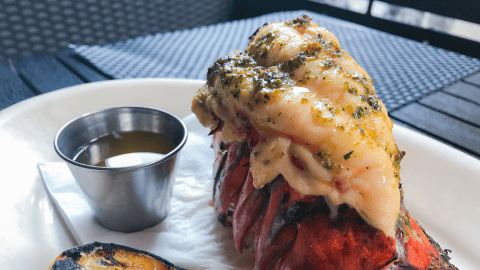
Broiling is a quick and easy way to cook lobster tails, and the result will certainly be a show-stopper at the dinner table. The high broiling heat helps caramelize the lobster tail’s natural sugars, creating a sweet and savory flavor.
It also helps to lock in the lobster’s natural juices, making for a succulent texture. Additionally, broiling the lobster tail helps to form a crispy, golden-brown skin, which can be a delicious alternative to the typical steamed texture.
Grilling
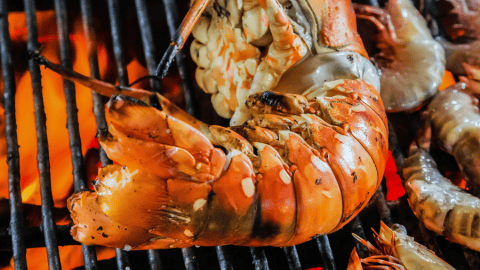
Grilling is a great way to add smokiness and char to the lobster tail. It’s also a quick and easy way to cook it. First, brush the lobster tail with melted butter or olive oil to help it cook evenly. Preheat a gas or charcoal grill to medium-high heat.
Place the lobster tail on the grill and cook for 5 minutes, then flip it over and grill for another 5 minutes. Be careful not to overcook the lobster, as it can become rubbery. The lobster tail is done when it’s opaque and cooked through.
How to Store Leftover Cooked Lobster Tail Safely
The best way to safely store leftover cooked lobster tail is to wrap it tightly in plastic or aluminum foil and store it in the refrigerator. Wrap the lobster tail in plastic wrap or aluminum foil and place it in an airtight container before freezing. Make sure to use it within two days. If you need to store the lobster tail longer, it can be frozen for up to three months.
Preparation
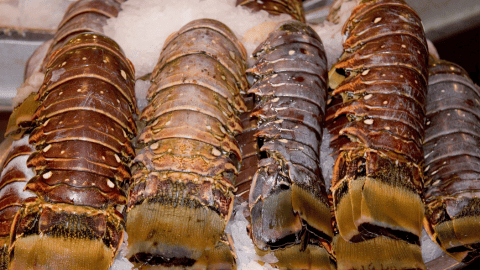
If you use frozen lobster tails, you must defrost them first. This can be done overnight in the fridge or cold water for about 30 minutes. Once the tail is defrosted, it should be rinsed and dried before cooking. It can then be cut down to the center or “butterflied” for a more elegant presentation. Seasonings can be added before or after cooking, depending on your preference.
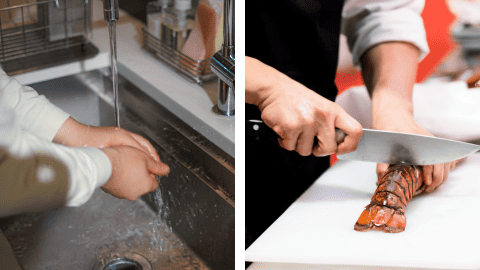
Before cooking your lobster tails, you should also prepare the other ingredients you may be using. This could include butter, garlic, lemon juice, and herbs or spices. Have these ingredients set out and ready to use during the cooking process. Additionally, you should prepare your cooking surface.
Food Safety Guidelines
- Thaw lobster tail in the refrigerator overnight before cooking. Do not thaw at room temperature.
- Wash your hands before and after handling lobster tail and other raw ingredients.
- Use separate cutting boards and utensils for raw foods and cooked foods.
- Cook lobster tail to an internal temperature of 145°F.
- Refrigerate leftovers promptly and consume them within 2-3 days.
- If reheating, heat to an internal temperature of 165°F.
- Avoid cross-contamination between raw and cooked foods.
- Do not leave a cooked lobster tail at room temperature for over 2 hours.
- Dispose of any shells or remains of the lobster tail in a sealed container or bag.
- Wash all surfaces and utensils used for cooking lobster tail with hot soapy water.
Serving Suggestions
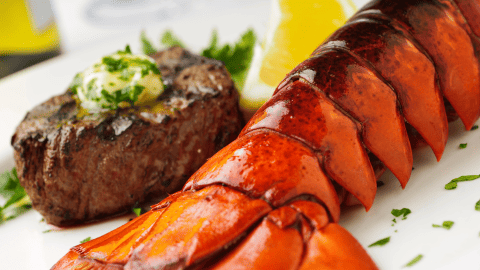
Lobster tails can be served with various sides, such as vegetables, potatoes, or rice. It can also be served with various sauces, such as clarified butter, drawn butter, hollandaise sauce, lemon butter sauce, or garlic butter sauce. A lemon garlic butter topping is a popular accompaniment to lobster tail.
For added flavor, herbs such as parsley, dill, chives, or oregano, can be added. The lobster tail can also be used in salads, soups, pasta dishes, or as an appetizer. The good portion size for a lobster tail is 3 to 10 ounces.
Equipment Needed
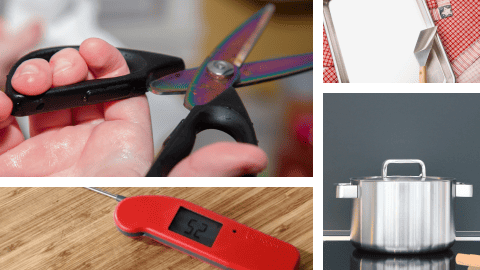
You will need kitchen shears and an instant-read thermometer to cook lobster tail. In radially, you will also need a large pot for boiling the lobster tails, a slotted spoon for removing them from the pot, a baking sheet, and some butter or oil for greasing the baking sheet. Before cooking, make sure to thaw your lobster tails if they are frozen, and once cooked, you will need a plate to serve them on.
Doneness Temperature and Lobster Tail Cooking Times
When cooking lobster tail, paying attention to the doneness temperature and cooking time is important. The taste of lobster is slightly sweet and briny, and it has a similar texture to shrimp due to its long muscle fibers surrounded by connective tissue. Lobster flesh cooks quickly and can turn tough and rubbery if overcooked.
To ensure that lobster tail is cooked properly, it is recommended to use an instant-read thermometer. The lobster is ready to eat when the internal temperature reaches 135 to 140ºF (57 to 63ºC). The shell will also turn bright red due to the coloring agent astaxanthin transforming when heated, and the flesh will turn from translucent to opaque pinkish-white color that is firm to the touch.
In-Shell Presentation and Appearance
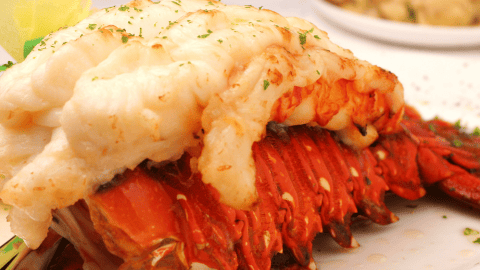
When cooking lobster tail, attention to the presentation and appearance is important. A properly cooked lobster tail should be golden brown, and the meat should be opaque and firm. The tail should also be cooked evenly so that the texture is consistent.
Paying close attention to the cooking temperature and time is important to achieve this. Additionally, garnishes such as lemon wedges, melted butter, and herbs can enhance the presentation and overall flavor when plating the lobster tail.
Conclusion
In conclusion, cooking the perfect lobster tail requires just a little know-how and practice. Remember to select high-quality lobster tails, follow food safety guidelines, and focus on presentation and appearance. With these five easy cooking methods, you can impress your guests and enjoy a succulent and flavorful meal. So take a chance and try out these recipes. You might find that cooking lobster tail is easier than you ever imagined! (Check out Gordon Ramsay’s Lobster Spaghetti)
How to Cook Lobster Tail FAQs
Q: What is the best way to cook lobster tail?
A: The best way to cook lobster tail will depend on your preferences. Boiling, steaming, baking, broiling, and grilling are all popular methods.
Q: What is the doneness temperature for the lobster tail?
A: The doneness temperature for lobster tail is between 135 to 140°F (57 to 63°C).
Q: How much lobster tail should I serve per person?
A: A good portion size for a lobster tail is 3 to 10 ounces.
Q: What should I serve with a lobster tail?
A: Lobster tail can be served with various sides, such as vegetables, potatoes, or rice. A lemon garlic butter topping is also a popular accompaniment.
Last Updated on July 9, 2023 by John Siracusa


